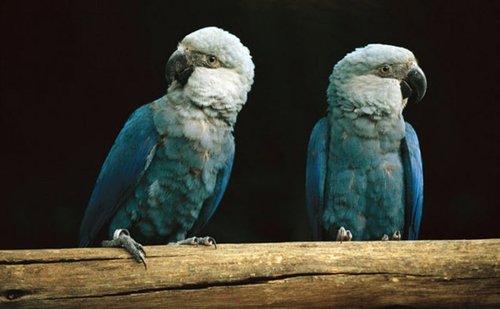
Spix's Macaw
The strikingly blue Spix's Macaw, with its vibrant feathers and long tail, is a rare Brazilian treasure. Critically endangered, it relies on the gallery forests for survival. Its remarkable comeback from presumed extinction highlights the critical role of conservation and habitat protection in preserving biodiversity.
20-40 years
Lifespan
360.0 g
Weight
Length: 56 cm
Size
Extinct in the Wild
Conservation Status
Characteristics
Cyanopsitta spixii, commonly known as Spix's Macaw, is a parrot native to Brazil. It features vivid blue plumage, a greyish head, and a long tail. Known for its rarity, the species inhabits the gallery forests along the Rio S?o Francisco. It is critically endangered and once presumed extinct in the wild.
Distribution Range of the Spix's Macaw
Cyanopsitta spixii, commonly known as the Spix's Macaw, is native to Brazil. Historically, its range was limited to the Rio São Francisco region in the northeastern part of Brazil, particularly in the states of Bahia and Pernambuco.
Spix's Macaw's Habitat
Environmental Conditions
The Spix's Macaw is typically found in the gallery forests along seasonal rivers, known as 'riachões,' in the semi-arid region of the Caatinga biome. This area is characterized by a hot and dry climate with sparse and seasonal rainfall. The average annual temperature ranges from 23°C to 27°C, and the vegetation mainly consists of thorny scrub and small trees.
Ecological Niche
The ecological niche of the Spix's Macaw is largely tied to the availability of Caraibeira (Tabebuia aurea) trees, which provide both nesting sites and a food source. The macaws feed on seeds, nuts, and fruits found in these habitats. This species is adapted to a highly specialized niche, relying on specific tree species and the unique environmental conditions of the Caatinga biome.
Copyright @ Nature Style Limited. All Rights Reserved.
 English
English